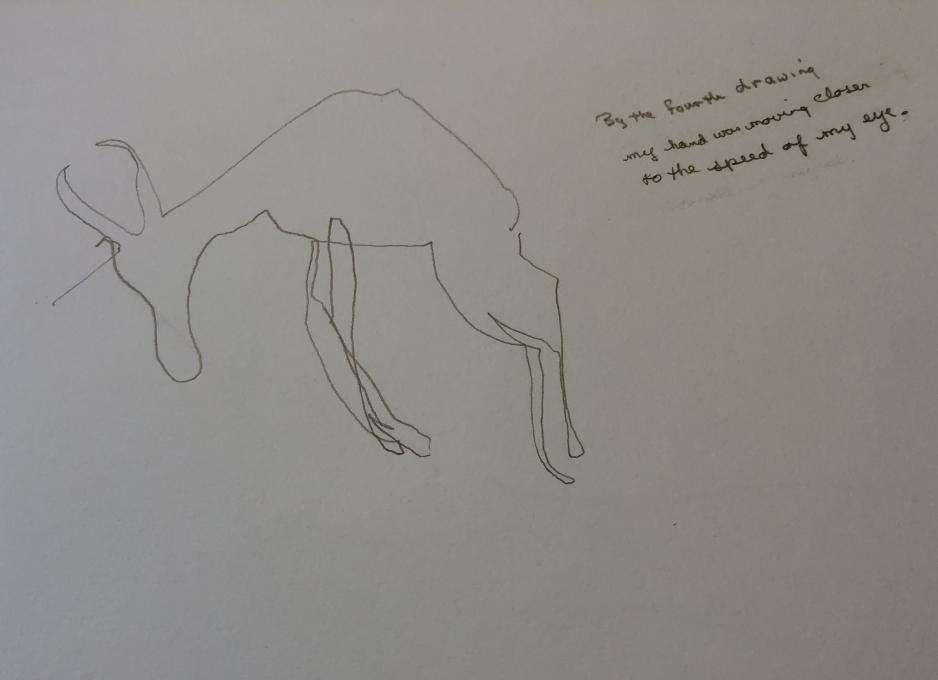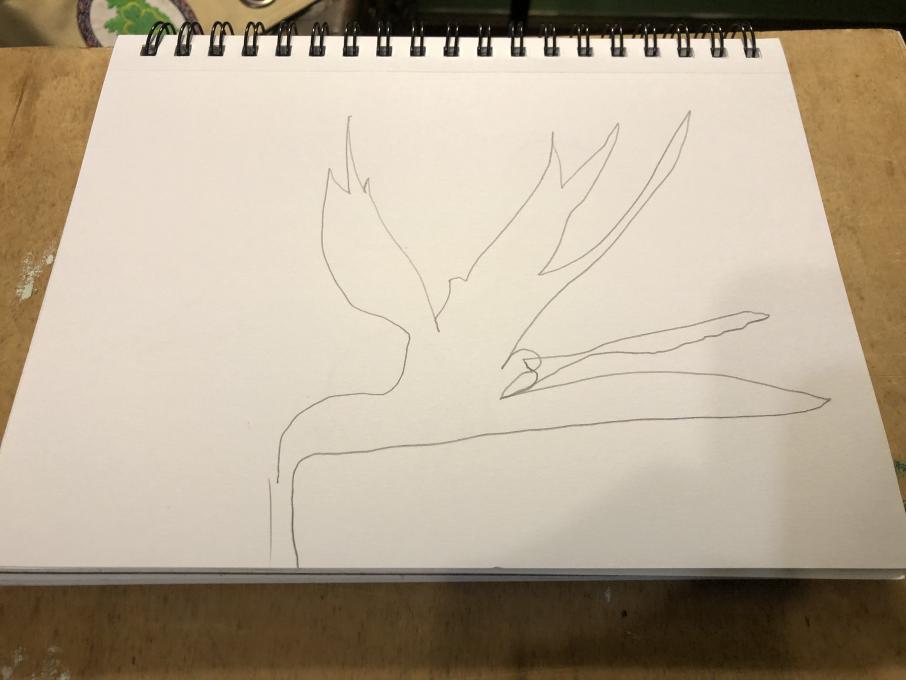The Cornell Lab Bird Academy › Discussion Groups › Nature Journaling and Field Sketching › Focusing on Your Subject – Blind Contour Drawing
-
I like Prof. Fuller's suggestions to 'wanna be' field journalists and I will certainly find them useful. I will try to share more of the work I did PRE CORNELL & Fuller and hope she & others will give me the constructive criticism [which will be welcomed],but if I can get some my before and after work in the portfolio I'd appreciate an 'atta girl' if you all think its deserved.
-
Contour drawing was almost like becoming one with the object. It created interesting curves if not complete pictures.
-
I had computer resistance to loading my drawings, so I will just talk about them. Difficult. The good things that I did: I got all the elements in terms of the right # of lobes on Columbine leaves. However, the beginning points, which were meant to be in the same place as the ending points, never met. My sense of proportion seems to change the closer I get to the ending point. Next time I will succeed at downloading my drawings.
-
This was fun as I had no expectations of the outcomes; no pressure. It helped me stay focused on my subject, but I was also trying to remember my placement on the page (muscle memory), which was distracting from the subject.



-
This was tough! I didn't succeed in connecting the start and end points in any of the drawings, and I was very challenged in my attempts to capture the width of the objects. But I recognize one or two elements in each drawing, and I see small improvements from one sketch to the next, so I am encouraged to keep practicing.

-
 I was surprised that I got better as I tried drawing more subjects. Did I concentrate better or did I learn to judge where my hand was on the paper? Interesting! In all of my sketches, I finish lower on the paper than where I started; I never finished higher on the page. I wonder why? Someone else commented ( and I agree) that this would be a good warm-up activity before sketching.
I was surprised that I got better as I tried drawing more subjects. Did I concentrate better or did I learn to judge where my hand was on the paper? Interesting! In all of my sketches, I finish lower on the paper than where I started; I never finished higher on the page. I wonder why? Someone else commented ( and I agree) that this would be a good warm-up activity before sketching. -
I must say that it was not easy and it made me stay focused. Also, I caught myself almost drifting to see my progress, but I restrained myself. Haha


-
 It was great to not worry about the product (vraisemblance) and to focus on the thing itself. I can see how this would connect hand-eye-brain-heart coordination. I also enjoyed the invitation to look for positives. Where did I actually slow down enough to record a line well?
It was great to not worry about the product (vraisemblance) and to focus on the thing itself. I can see how this would connect hand-eye-brain-heart coordination. I also enjoyed the invitation to look for positives. Where did I actually slow down enough to record a line well? -
wow, that looks like mine!!!😂
-
-
This wasn't easy. The best thing about this exercise - again is to help me become more observant.
-

-

-
 This was an interesting exercise and I enjoyed reading and seeing others posts.
This was an interesting exercise and I enjoyed reading and seeing others posts. -
Countour drawing - This is very fun(ny). In each attempt, I started with big motions, but ended with small lines - so the starting and end points were never very close to each other though several elements weren't too bad. I enjoyed looking for any "this was decent" elements. By the third example, I started intentionally trying to help my arm recalibrate to visual cue (ie., keep going, not big enough, not long enough yet) - that was helping. I am actually quite proud of my tree-barn-silo that followed the initial exercises. Interesting challenge.

-
I felt very relaxed with the contour drawing. Several times I found myself drifting off. It is pleasing to stay focused on the outline rather than fleshing out all the separate parts. I'll upload my photos on the phone.
-

 I never can get back to where I started in blind contour drawings but I do find them helpful in focusing on the subject.
I never can get back to where I started in blind contour drawings but I do find them helpful in focusing on the subject. -
After a busy 9 or 10 days, I'm finally back to class! I had left off trying to do the blind contours, which were squiggly lines at best. Tried again and at least got a little better. I'm not brave enough to share mine! I remember doing this in a junior high art class and it is valuable, so I'll try again as times goes on!
-

-
Kevin, I love your comic! Hilarious
-
Kevin, I see a career as a cartoonist in your future! Cheers, Laurie
-
Funny!! :)
-
Great humour!
-
-
Well that was interesting. The drawings in no way resembled the majority of the pictures. The salamander was close. It did help me focus on the exact area to be drawn instead of the overall. Will have to keep practicing this technique.
-
It was certainly an exercise to aid an older person to 'loosen up' and to remember first the size of my sketch pad . Everything I tried to draw rode off the edge of my pad, but Fuller's reminder to not be too hard on myself and just have fun made me giggle at my work in the end and determine to try to be a better student with any sparks to ones imagination she offers her students.
-
-
That was an interesting assignment, I tried to focus on the details of the animals and plants, but I had a hard time reconnecting the lines in the end. In the end of each of my drawings, I had a concept of what it could be, but if I gave it to someone, I doubt they would know what I drew. Overall, it allowed me to understand the structure of the subjects since each of them had different curves and shapes.
-
That was a great exercise in not getting caught up in what your drawing looks like, sometimes I get so stressed about the drawing I forget to enjoy the observation. None of my blind contours looked like what I was drawing ,but the line was strong and I did get details that I might have overlooked if I was trying to make it look like what I thought it should look like, if that makes any sense. This also heightened my awareness of angles and small detail that made me ask questions ,not just how do I draw this? Perhaps I will do this before I start any drawing.
-
I'll have to overcome my use of jigs to constrain my work.

-
Hahahaha this was the best of the bunch. the bird looked like a bird and I found that I could get the first half much more accurately than the last half of each object.

-
Bill, were you a draftsman before you got involved with nature and that pocket of your creativity?
-
-
There were some portions of lines that looked true and accurate even if they didn't meet up with the other lines! It seems like a good way to capture some of the angles and the trajectory of a line even if the proportions were right out the window.
-
I found the exercise challenging, and the results didn’t look even close to what I was suppose to be drawing. But there are a few spots here and there I can recognized, so I guess that is encouraging. Will just have to continue to practice.
-
Well that was frustrating , humbling, and a good exercise to loosen up, observe and enjoy the gestural quality of line. Also made me laugh. Love my Springbok drawing it reminds me of cave drawings.
Read More:

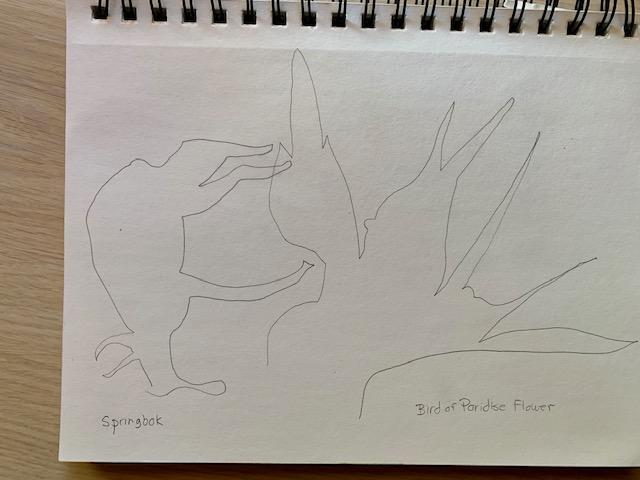

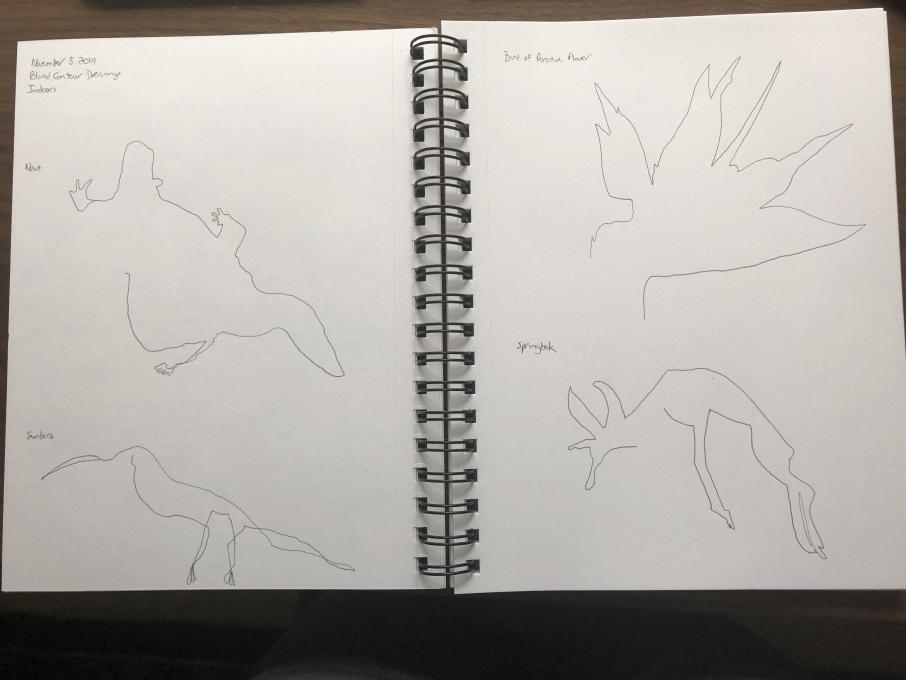
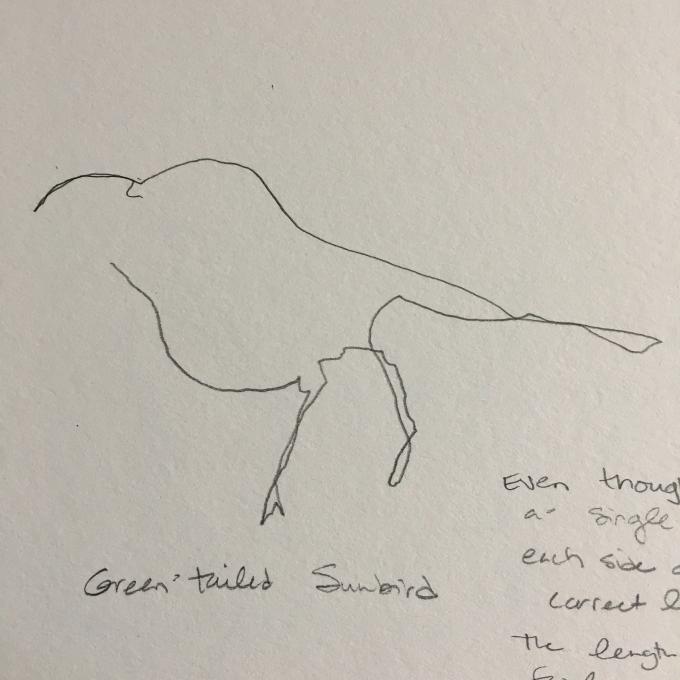 I was surprised that I got better as I tried drawing more subjects. Did I concentrate better or did I learn to judge where my hand was on the paper? Interesting! In all of my sketches, I finish lower on the paper than where I started; I never finished higher on the page. I wonder why? Someone else commented ( and I agree) that this would be a good warm-up activity before sketching.
I was surprised that I got better as I tried drawing more subjects. Did I concentrate better or did I learn to judge where my hand was on the paper? Interesting! In all of my sketches, I finish lower on the paper than where I started; I never finished higher on the page. I wonder why? Someone else commented ( and I agree) that this would be a good warm-up activity before sketching. 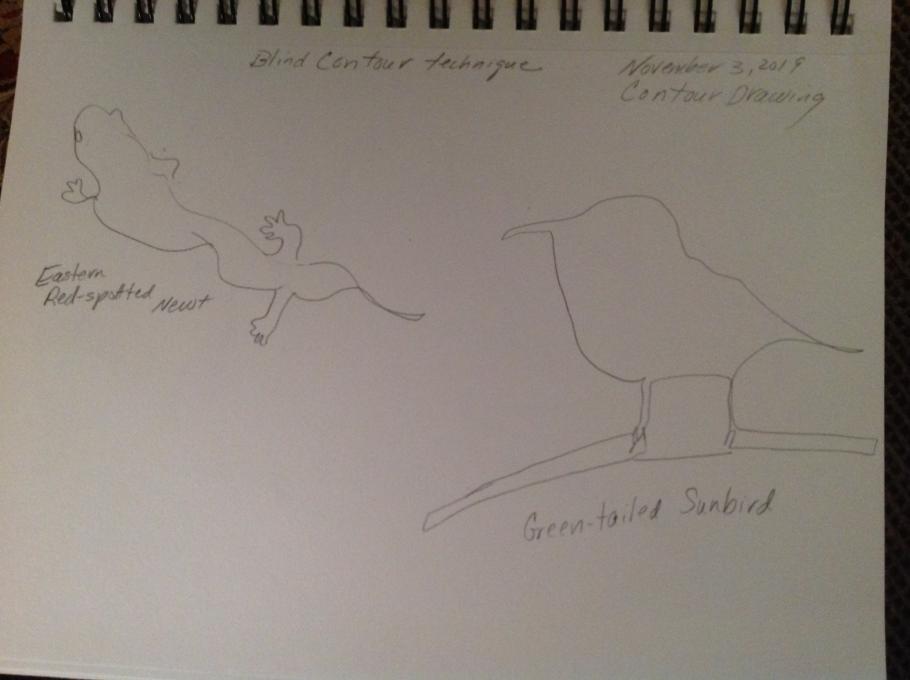
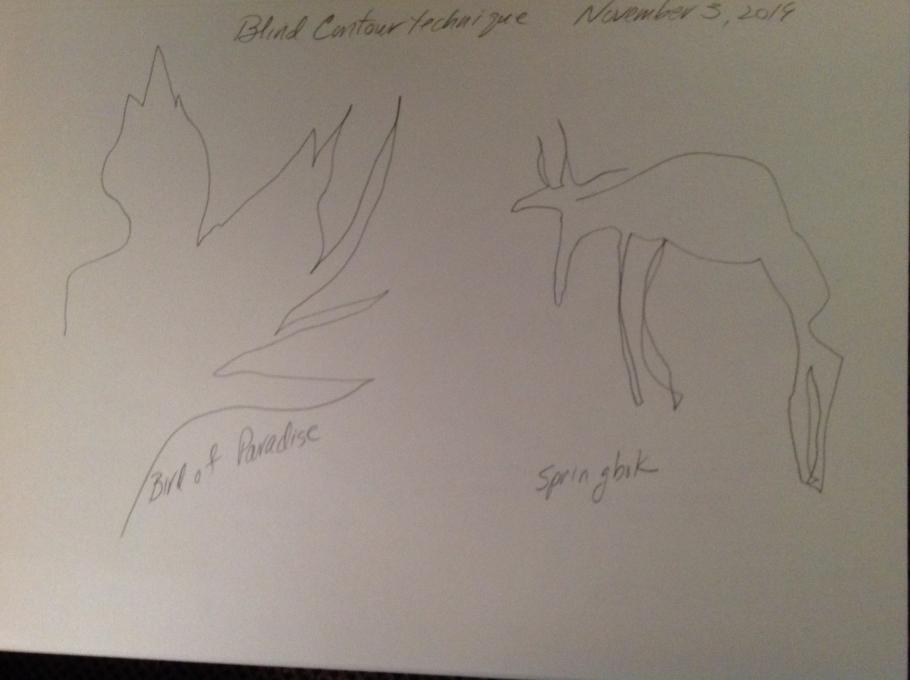
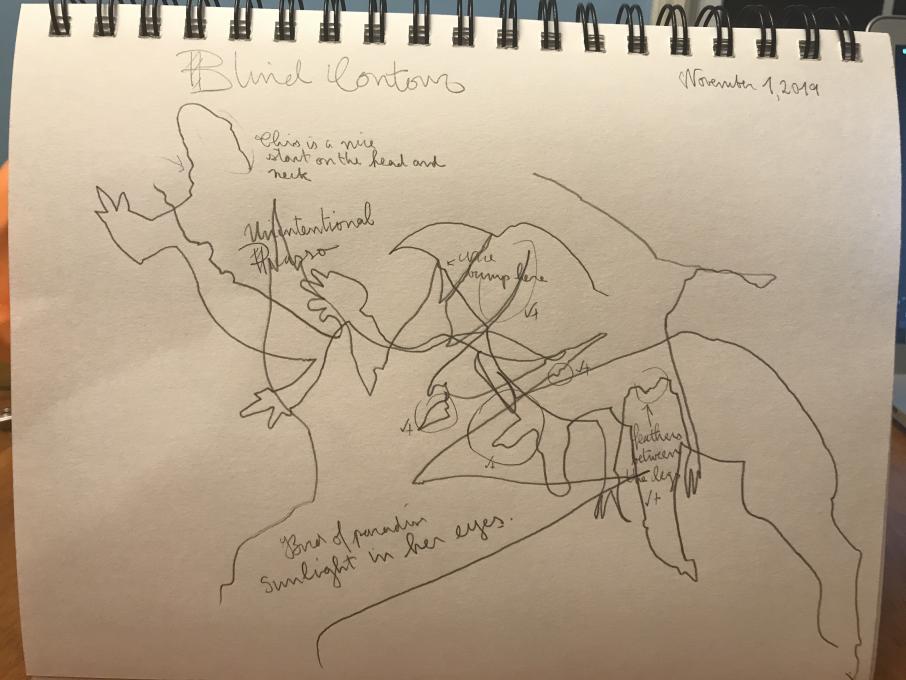 It was great to not worry about the product (vraisemblance) and to focus on the thing itself. I can see how this would connect hand-eye-brain-heart coordination. I also enjoyed the invitation to look for positives. Where did I actually slow down enough to record a line well?
It was great to not worry about the product (vraisemblance) and to focus on the thing itself. I can see how this would connect hand-eye-brain-heart coordination. I also enjoyed the invitation to look for positives. Where did I actually slow down enough to record a line well? 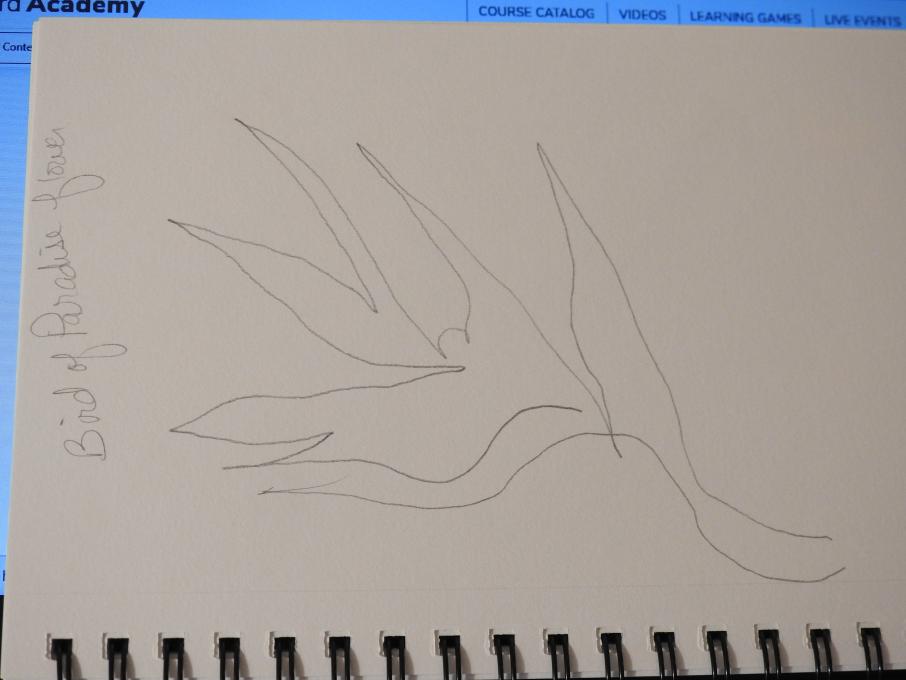
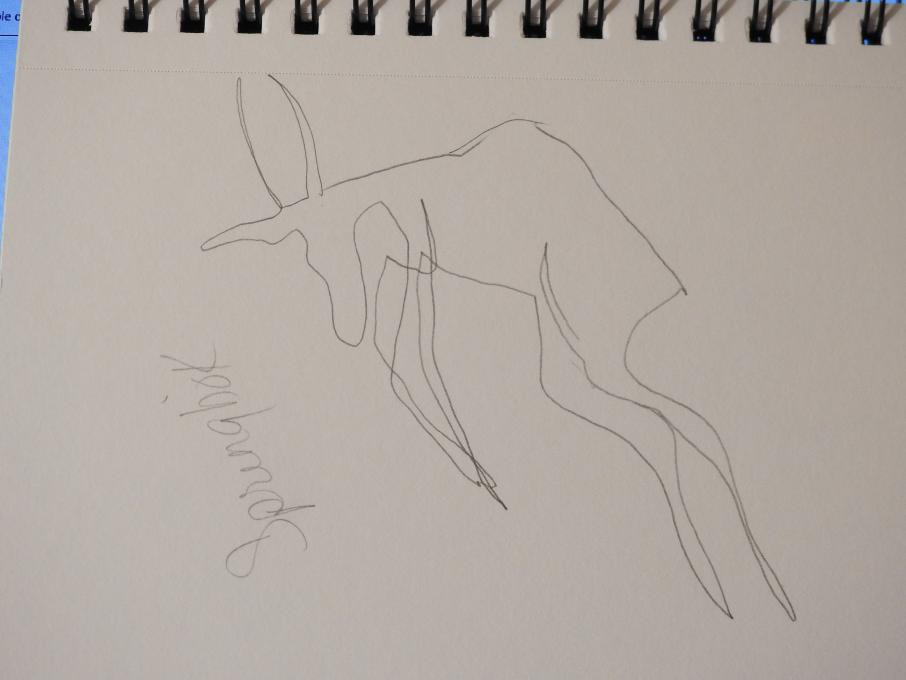
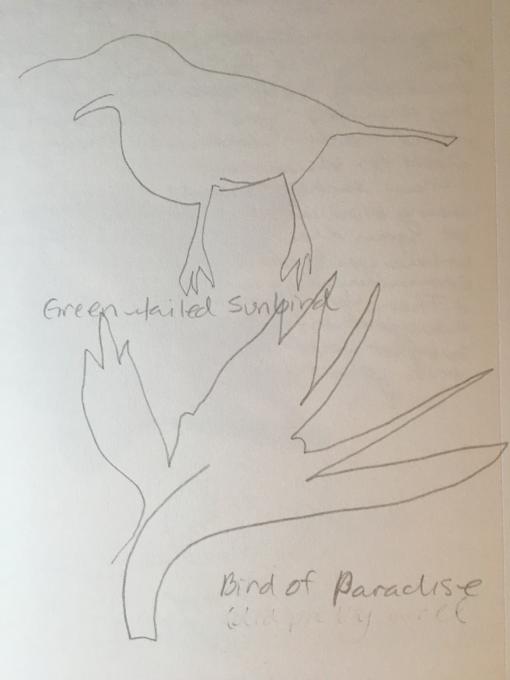 This was an interesting exercise and I enjoyed reading and seeing others posts.
This was an interesting exercise and I enjoyed reading and seeing others posts. 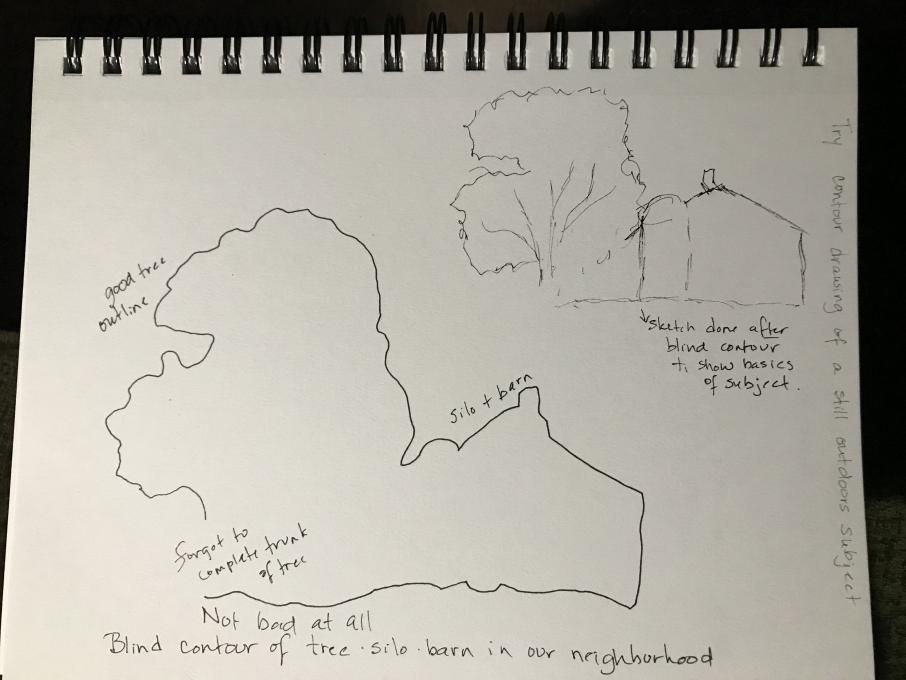

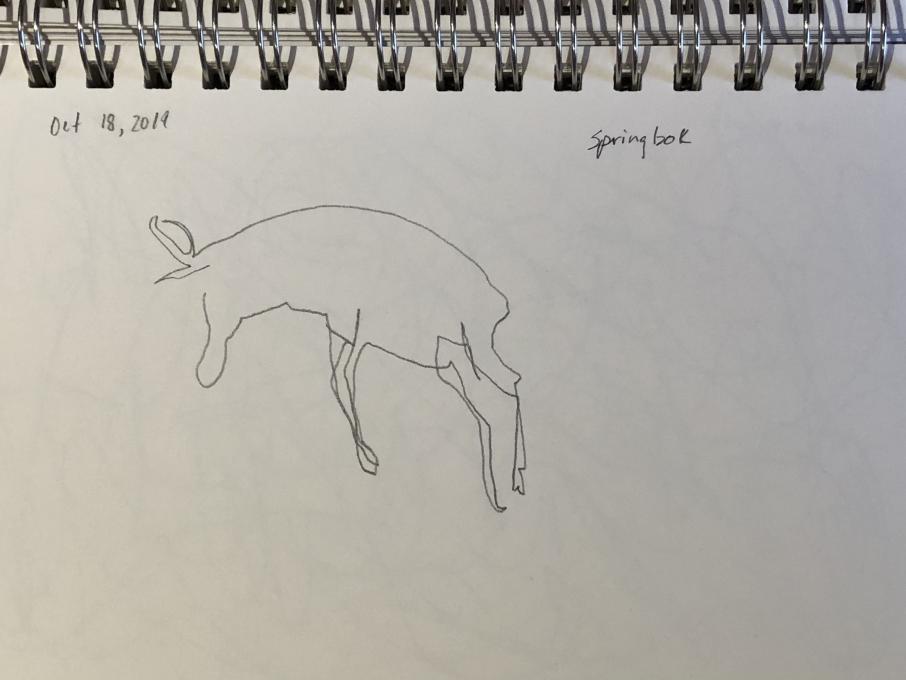 I never can get back to where I started in blind contour drawings but I do find them helpful in focusing on the subject.
I never can get back to where I started in blind contour drawings but I do find them helpful in focusing on the subject. 
